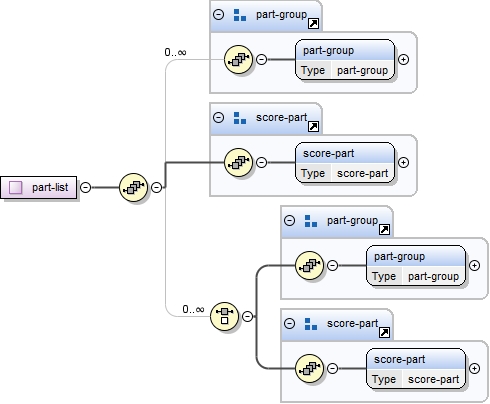| Namespace | No namespace | ||
|
Annotations
|
|
||
|
Diagram
|
 |
||
|
Used by
|
|
||
| Model | part-group , score-part , ((part-group) | (score-part)) | ||
| Children | part-group, score-part | ||
|
Source
|
|
||
| Schema location | file:/C:/Users/mihai/Desktop/MusicXML-Schema/musicxml.xsd |